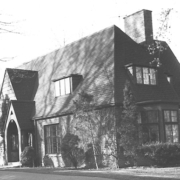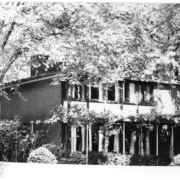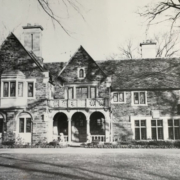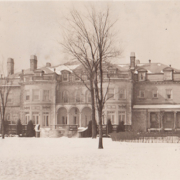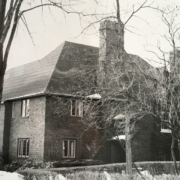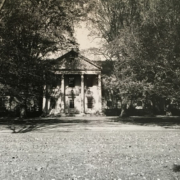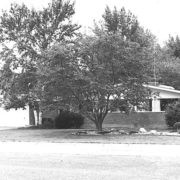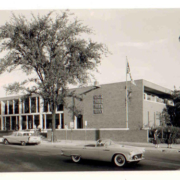Historical Architecture of Grosse Pointe – Village Lane
Last week we presented 35 Fisher Road. Completed in 1909, by Smith, Hinchman & Grylls, 35 Fisher Road started out as Grosse Pointe’s first telephone exchange for the Home Telephone Company. After serving the community for around eight years it is now a stunning historic home.
This week we stay in Grosse Pointe City and head to the picturesque street of Village Lane, located between Cadieux and Notre Dame. The properties on Village Lane were created in two different eras – the even numbered historic homes completed during the 1920’s, and the odd numbered modern Colonial homes built in the late 1940’s. It is the history of the earlier properties that we will be focusing on.
The historic homes on Village Lane have double digit numbers today, however, at the time of completion the numbers of the homes began with the number 16830 and ran through to 16934. The properties on display provide an eclectic mix of architectural styles, from traditional Clapboard Colonial though to an English cottage style residence that ‘might have been transplanted from one of the southern counties of England’.
16830 Village Lane – 1925 – now number 14
One of the older homes on the street, it is a classically designed 2,025 sq ft Clapboard Colonial Home. Upon completion the property was located directly opposite from 570 Cadieux (Windwood Manor, completed in 1914).
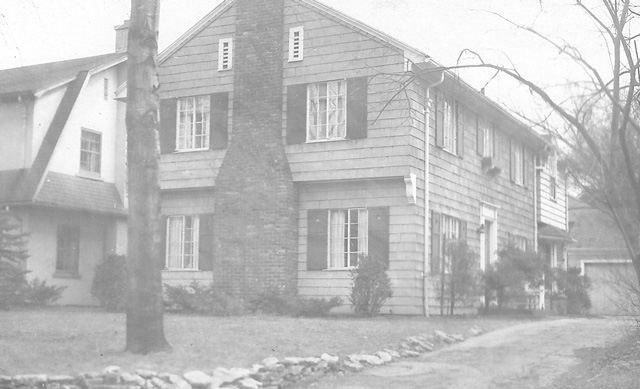
16844 Village Lane – 1928 – now number 16
This is a pretty Dutch Colonial Revival house with a stucco exterior. In the United States the term “Dutch Colonial” appeared sometime between 1920 and 1925. Source: Wikipedia. The Dutch Colonial Revival style was becoming increasingly popular in Grosse Pointe during the 1920’s, and there are some wonderful examples throughout the Grosse Pointe communities. The typical features of this style include a gambrel roof, chimneys located on the ends of the house, and a symmetrical front façade. A gambrel roof is usually a symmetrical two-sided roof with two slopes on each side. The upper slope is positioned at a shallow angle, while the lower slope is steeper. Source: Wikipedia.

16900 Village Lane – 1928 – now number 18
A central entrance clapboard Colonial home, this style was incredibly popular throughout Grosse Pointe during the 1920’s.
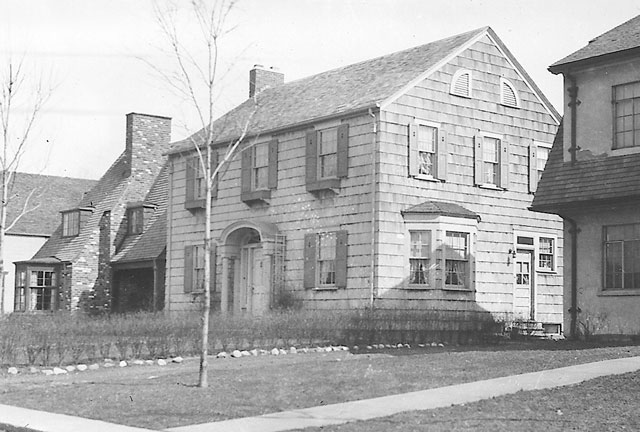
16910 Village Lane – 1927 – now number 20
Noted architect D. Allen Wright designed this pretty English cottage for Harold B. Tyree. At just over 2,000 sq ft the asymmetrical house is bigger than it looks and is perfectly formed. ‘With walls of red brick and a steeply pitched shingled roof, the treatment belongs to the picturesque cottage school’. Source: The 1936 Book of Small Houses.

The architect, D. Allen Wright, was a noted Detroit based designer. He created over 20 residences (that we know of) in Grosse Pointe. Between 1926 and 1930, many of projects were large French inspired homes, typically in the French Normandy and Provencal style – his work provides many fine examples of this architectural approach. Two of Wright’s larger and more prominent projects are 114 Lewiston (completed in 1929) and 166 Ridge Road (completed in 1927). Post 1930, Wright’s style began to evolve considerably. Many of his designs displayed characteristics of modern architecture that was gaining popularity throughout Europe and America – thanks to the growing influence of the Bauhaus in Germany. Two fine projects completed by Wright during this era include 905 Lakepointe – Grosse Pointe Park, and 846 Grand Marais (both completed in 1937).
16920 Village Lane – 1925– now number 22
This property was also one of the earlier homes to be constructed. It was built by the renowned architect and builder H. H. Micou. During a career that spanned three decades Micou built many prestigious homes in Grosse Pointe in conjunction with some of Detroit’s most recognized architects. It appears the property was commissioned by Frank J. Towar, president of Towar’s Wayne Co. Creamery. Mr. Towar was born in Ontario in 1852. He and his family moved to Detroit when he was young, attending school in Detroit. He began his career as a clerk for Hull Bros., grocers, then spent one year with the U.S. Lake Survey. He then entered the milk and butter business in 1874, with Towar’s Wayne Co. Creamery – a company established by his father. He became president of the company in 1906. In 1937, he sold 16920 Village Lane to entrepreneur Harry W. Frost Jr.
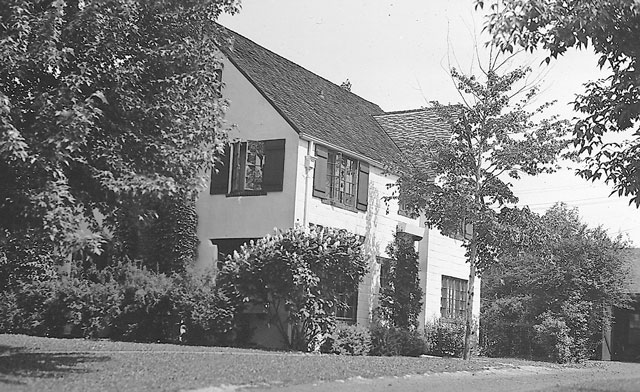
16930 Village Lane – 1927– now number 24
This English style home was designed and built by Carl L. Meek, a known architect (and builder) in Grosse Pointe during the late 1920’s. Meek was known for not only designing homes, but also collaborating with numerous leading architects to build homes for them. He worked for several prominent clients in Grosse Pointe, including the publisher of the Detroit News, William Scripps (160 Touraine), and prominent throat specialist Dr. George L. Renaud (31 Renaud). The majority of his residential projects in Grosse Pointe were around 3,000 sq ft. The style of these houses varied a great deal encompassing French Normandy, Tudor, Colonial, and English architectural styles. Most of these styles had become extremely popular in the Grosse Pointe communities during the 1920’s, and Carl Meek certainly embraced these increasingly evolving architectural trends. You can read his full story by clicking here.

16934 Village Lane – 1927– now number 26
This delightful English Cottage style home was also designed by Carl L. Meek. Possibly, the most noted owner on Village Lane was popular local artist Jac Eduard Purdon – known for sculpting, painting, cartography, and writing. Born in Detroit in 1939, he graduated from Wayne State University with a master’s degree in cartography. During his career he worked for the Southeast Michigan Council of Governments in the city of Detroit and was deeply involved in the art direction for the Detroit People Mover stations. He also worked on various artistic projects, this included building startling life-sized models of the human body with all of the muscles and ligaments aligned perfectly – one of his artworks was comprised of more than 15,000 individual parts. Gallery owner Robert Maniscalco noted in an exhibit of Mr. Purdon’s work: “Sculptor Jac Purdon received critical acclaim at the Michigan Gallery exhibit, which brought him to the public’s attention in 1990. His brilliantly articulated, highly rendered sculptures compel the viewer to confront popular culture’s definitions of truth”. Source: findagrave.com. Mr. Purdon and his wife Carol (nee Kennedy) resided in Grosse Pointe from 1966 (their entire married lives). The couple purchased 16934 Village Lane in 1970. They were a prominent couple in the community and were a key part of Grosse Pointe Theatre. Jac Purdon passed in 2008.
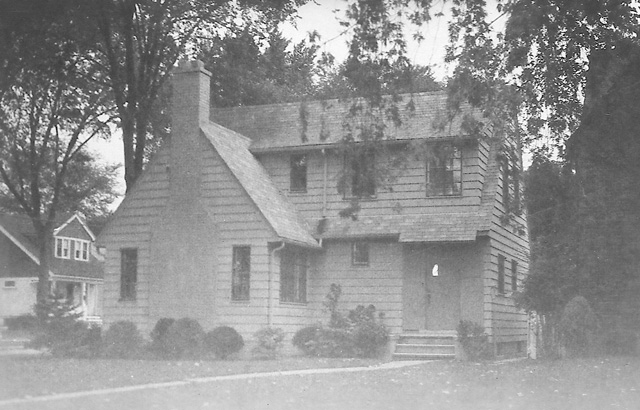
Village Lane is a pretty street that is lined with some handsome homes. It may be small, but the street is perfectly formed.
*Photos courtesy of the Higbie Maxon Agney archives unless stated.
Written by Katie Doelle
Copyright © 2021 Katie Doelle

